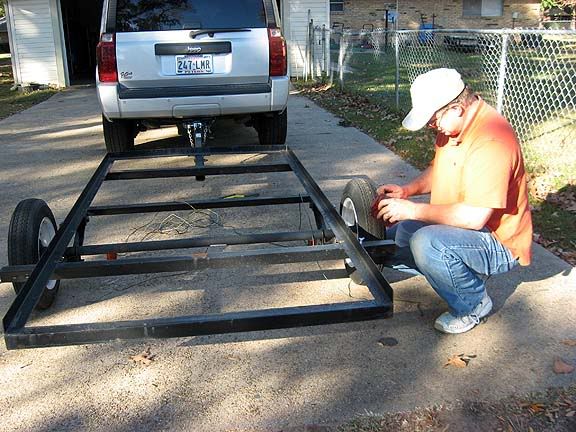I've never done any welding, but we have a gas TIG welder here at work and I'm going to try my hand at it. I plan on building a foamy trailer, which will be very light weight. I originally looked into and got quotes for 2"x2" steel tubing for the chassis, but I am wondering if that is overkill. I want to build a 5x8 trailer with some kind of torsion axel, either Dexter #8 or half axels.
Anyway, I'm thinking about building much of the chassis out of 2" angle, except the tongue, of course. Any thoughts on this? A local trailer building company gave me a quote of $800 for a 5x8 trailer with lights, but unpainted, made out of channel. They make all of their trailers out of channel because a big part of their business are boat trailers and channel has no areas to hold water and therefore rust.
Seems like angle, with the right number of cross-members, would be fine. Any thoughts?
Materials for a light weight chassis?
12 posts
• Page 1 of 1
Materials for a light weight chassis?
I make stuff, and it's all designed on Post-Its... the small ones.
-

HandyAtLeast - Teardrop Builder
- Posts: 41
- Images: 22
- Joined: Tue Apr 12, 2011 12:54 pm
- Location: Puget Sound
Re: Materials for a light weight chassis?
HandyAtLeast wrote: Seems like angle, with the right number of cross-members, would be fine. Any thoughts?
A TSC 4X8 no floor is constructed out of 2x2 angle - except for the tongue - it will be just fine

-

starleen2 - 5th Teardrop Club
- Posts: 16272
- Images: 224
- Joined: Sat May 12, 2007 8:26 pm
- Location: Pea Ridge ,AR


